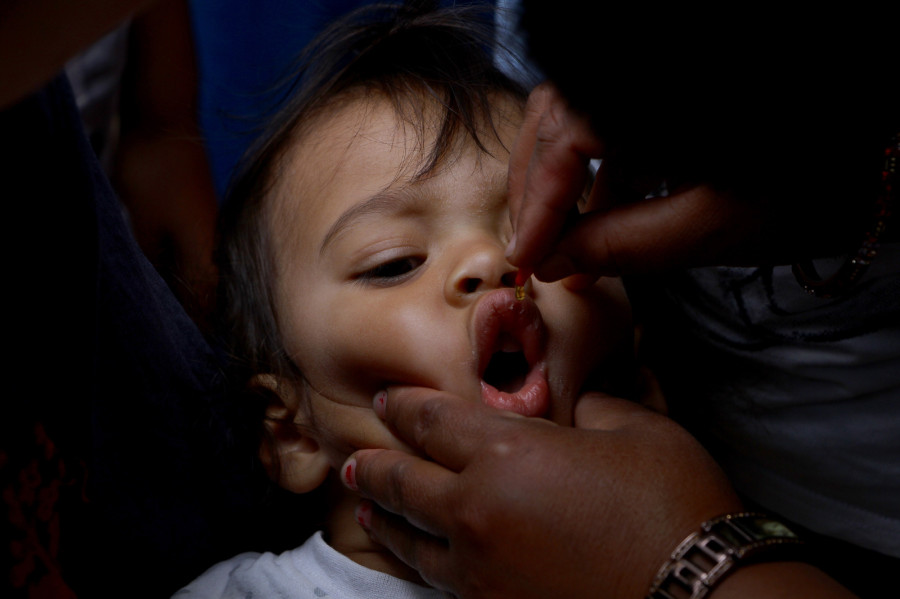Health
Number of districts declared fully immunised increases to 58, but immunisation coverage is far from target
The government has pushed the deadline to declare the country free of measles-rubella virus 2023.
Arjun Poudel
In April 2017, the government declared Lalitpur a fully immunised district. The following year, Kathmandu was given the same status. According to the government, 58 out of 77 districts are now fully immunised, meaning all children under 15 months have not missed out on any of the routine vaccines.
The Family Welfare Division under the Department of Health Services says the government is working to declare the remaining 19 districts fully immunised.
However, the immunisation data provided by the section shows 27 percent of children are yet to receive the second dose of measles-rubella vaccine.
"Claims of the concerned health agencies might be similar to another government agency, which declared the country open-defecation free," said Dr Shyam Raj Uprety, a child health expert. "Nepal would have achieved most of the health targets until now if such claims were near to accuracy."
Nepal had earlier committed to eliminating measles within 2019. But due to frequent occurrence of measles cases, the country has revised its target to 2023.
To declare measles as eliminated, the number of cases should be fewer than five in every 1,000,000 population or no case throughout the year and the coverage rate of both doses of measles-rubella vaccine should be more than 95 percent.
Uprety expressed doubts over the claim of the concerned officials that big cities— Kathmandu and Bhaktapur—achieved fully immunised status.
"Compared to far-flung villages of the remote districts, big cities like Kathmandu, Lalitpur and emerging cities are more challenging in terms of implementing any health programmes," said Uprety. "Floating population, scattered slums, working-class people, lack of awareness and lack of access to health workers are some of the challenges which prevent the government officials from achieving the targets."
People who work as labourers in big and emerging cities are less aware of the importance of immunisation.
Officials at the immunisation section conceded that there may have been errors in the health data of big and emerging cities.
"We achieve more than 100 percent target every time, but every study shows big cities like Kathmandu and emerging cities are lagging far behind than other places," Dr Jhalak Sharma, chief of the immunisation section, told the Post. "We have been working on 2011's national census's data and setting the targets, accordingly. Our target might be inaccurate, as we do not know the exact population."
The coverage rate of the second dose of measles-rubella vaccine was raised from 59 percent two years ago to 65 percent last year and for this year, it’s been set at 73 percent. Sharma said that without continuing the progress rate at the current pace, the 2023 target to declare the country free of measles-rubella virus won’t be possible.
"Yes we have a lot of challenges, but we have to overcome them," said Sharma. "We have been doing micro-planning to achieve the targets."
Along with the immunisation section, the concerned health agencies under the provincial government and local levels will review the progress, discuss the shortcomings and do the planning to immunise all children under the routine immunisation programme.
“Female community health volunteers would be mobilised to ensure that no child misses out on any vaccine,” said Sharm. “Immunisation centres will be increased in the remote villages, and districts will be asked to sustain their fully immunised status.”




 7.12°C Kathmandu
7.12°C Kathmandu














